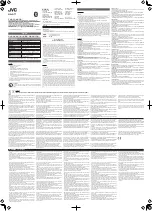
46
4.4.4 UPnP
UPnP offers peer-to-peer network connectivity for PCs and other network devices, along
with control and data transfer between devices. UPnP offers many advantages for users
running NAT routers through UPnP NAT Traversal, and on supported systems makes tasks
such as port forwarding much easier by letting the application control the required settings,
removing the need for the user to control advanced configuration of their device.
Both the user’s Operating System and the relevant application must support UPnP in
addition to the router. Windows XP and Windows Me natively support UPnP (when the
component is installed), and Windows 98 users may install the Internet Connection Sharing
client from Windows XP in order to support UPnP. Windows 2000 does not support UPnP.
UPnP:
Select this checkbox to activate UPnP. Be aware that anyone could use an UPnP
application to open the web configurator's login screen without entering the router’s IP
address
Auto-configured:
Select this check box to allow UPnP-enabled applications to
automatically configure the router so that they can communicate through the router, for
example by using NAT traversal, UPnP applications automatically reserve a NAT forwarding
port in order to communicate with another UPnP enabled device; this eliminates the need to
manually configure port forwarding for the UPnP enabled application.














































